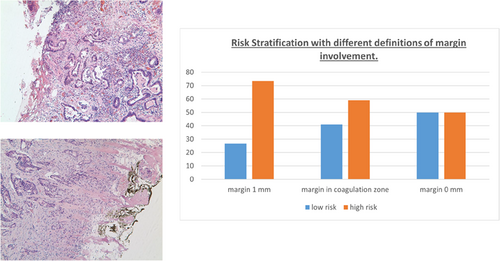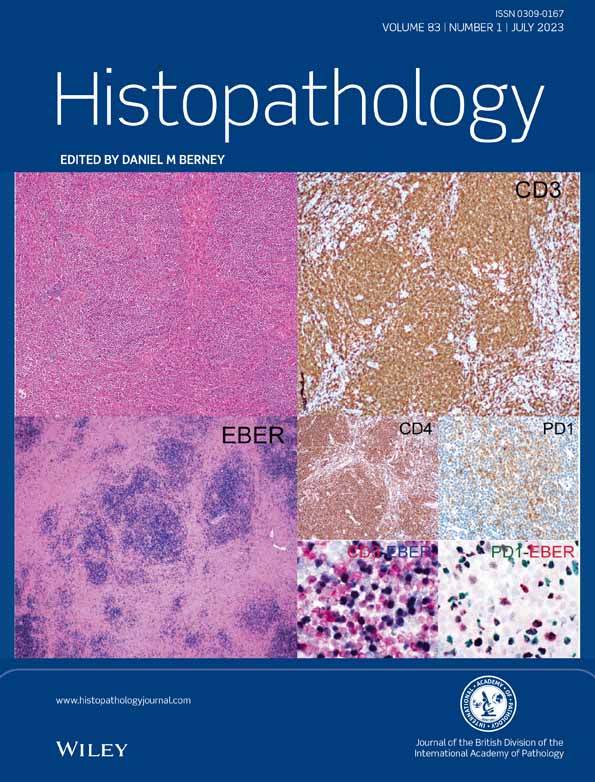Resection margin involvement after endoscopic excision of malignant colorectal polyps: definition of margin involvement and its impact upon tumour recurrence
Abstract
Aims
Malignant polyps are examined to assess histological features which predict residual tumour in the unresected bowel and guide surgical decision-making. One of the most important of these features is resection margin involvement, although the best definition of margin involvement is unknown. In this study we aimed to investigate three different definitions and determine their impact on clinical outcomes.
Methods and results
One hundred and sixty-five malignant polyps removed endoscopically were identified and histological features correlated with either residual tumour in subsequent surgical resections or tumour recurrence following a period of clinical follow-up. Involvement of the polyp margin by cancer was defined in three different ways and outcomes compared. Tumour recurrence was associated with tumour grade, mucinous histology and resection margin involvement. All three definitions of margin involvement separated polyps into clinically significant categories; however, a margin ≤ 1 mm identified 73% of polyps as ‘high-risk’ compared with 59.1% when involvement was defined as tumour within the zone of coagulation artefact at the polyp base or 50% when tumour was present at the margin. All three ‘low-risk’ groups had a locoregional recurrence rate < 6.5%.
Conclusions
Definitions of margin involvement for endoscopically removed malignant polyps in the colon and rectum vary between health-care systems, but a 1-mm clearance is widely used in Europe and North America. Our results suggest that a 1-mm margin is unnecessary and should be replaced by a definition based on tumour at the margin or within coagulation artefact at the polyp base.
Graphical Abstract
Conflicts of interest
None of the authors has a conflict of interest to disclose.
Open Research
Data availability statement
Data available on request from the author.





